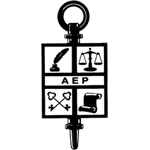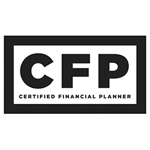As a business owner, your identity and your income have likely been tied to the company you built. But eventually, the time comes when you want to step away—from the day-to-day demands, the risk, and the responsibility.
The question is: How do you turn years of business equity into a reliable retirement income plan—without regrets?
We specialize in retirement planning for business owners facing exactly this transition. A successful exit requires more than just finding a buyer. It demands a holistic strategy that considers tax consequences, personal wealth goals, legacy planning, and the emotional side of letting go.
Here’s how to build your exit on your terms.

Why Business Owners Need a Different Kind of Retirement Plan
Most traditional retirement advice assumes W-2 income, predictable benefits, and corporate retirement plans. But entrepreneurs operate in a different reality.
Your wealth may be largely illiquid—tied up in your company. Your retirement age is flexible but uncertain. And your business might represent your largest (and riskiest) asset.
This makes a traditional 401(k)-centric plan insufficient. Instead, you need an integrated business exit strategy that supports the rest of your retirement plan.
We cover this mindset shift more deeply in How to Navigate Retirement Planning Amid Economic Uncertainty.
Step 1: Define Your “After” Vision
Before you calculate sale proceeds or tax outcomes, clarify your vision for life after exit.
Ask yourself:
- Do I want a full retirement, or will I stay involved in some capacity?
- Will I consult, mentor, or start another business later?
- Do I want to relocate, travel, or support family?
- How much income will I need monthly to live the life I envision?
Too many business owners focus on the deal mechanics before clarifying what they truly want next. This leads to reactive planning—or worse, seller’s remorse.
Step 2: Know What Your Business Is Really Worth
You may have a general sense of your company’s value, but have you had a formal valuation?
Understanding your business’s market value—not just revenue—sets the foundation for planning. A qualified valuation also reveals where value is concentrated and how to de-risk or diversify.
Different types of buyers (family, internal succession, third-party, private equity) will assign different values depending on cash flow, dependencies, and scalability.
TIP: Work with a team of advisors (financial planner, CPA, valuation expert, attorney) well in advance of your exit. This allows you to maximize value and minimize surprises.
Step 3: Plan the Transition—Not Just the Sale
A business exit is not an event—it’s a process. And the earlier you plan, the more options you have.
Here are common exit routes:
- Third-party sale: Sell outright to an outside buyer.
- Internal sale: Sell to a key employee, family member, or management team.
- ESOP (Employee Stock Ownership Plan): Gradual exit while retaining some control.
- Liquidation: Sometimes the best option, depending on the business model.
Each strategy has tax, legal, and financial planning implications. A good plan matches the method with your goals—whether that’s maximum value, legacy preservation, or employee continuity.
If divorce or family complexity is part of the picture, read Navigating the Tangled Finances: Expert Financial Advice to Guide You Through Divorce to understand how transitions can affect ownership structures.
Step 4: Convert Equity Into a Retirement Income Stream
Once the business is sold or transitioned, the next phase begins: turning equity into retirement income.
Ask:
- Will you receive a lump sum, installment payments, or residual equity?
- How will proceeds be taxed—capital gains, ordinary income, or a mix?
- What income-producing assets will replace your business earnings?
This is where a holistic retirement plan matters. For example, in The Benefits of a Holistic Financial Planner, we explain how integrating tax strategy, estate planning, and investment management protects your exit gains long-term.
You may also need to allocate funds for:
- Healthcare (especially if retiring before Medicare eligibility)
- Long-term care insurance or planning
- Gifting strategies (to family, charity, or philanthropic goals)
The right withdrawal and tax-efficient investment strategy can make a significant difference in how long your proceeds last.
Step 5: Protect What You’ve Built
Business owners often delay personal financial planning while building the company. But once you’ve exited, protecting that wealth becomes paramount.
Post-sale, be sure to:
- Review your estate plan and update beneficiaries, trusts, and tax minimization strategies. See The Legacy Planning Checklist: 7 Documents You Can’t Ignore for essentials.
- Evaluate asset protection strategies to reduce exposure from lawsuits or creditors.
- Revisit insurance coverage—disability, long-term care, umbrella liability—as your risk profile shifts.
- Establish a sustainable investment policy aligned with your new income needs.
Most importantly, structure your wealth to support the lifestyle and legacy you’ve worked so hard to create.
Frequently Asked Questions
Q1: When should I start planning my business exit strategy?
Ideally 3–5 years before you intend to leave. Early planning maximizes tax opportunities, business value, and strategic options. Even if you’re not sure when you’ll exit, having a plan in place keeps you ready.
Q2: Can I still retire if I can’t sell my business?
Yes—but it requires alternate income planning. You may consider transitioning to a passive role, collecting dividends, or phasing out over time. A holistic financial planner can help model different scenarios.
Q3: How do I avoid paying too much in taxes when I sell?
Proper structuring is essential. Strategies may include installment sales, trusts, charitable giving, or Qualified Small Business Stock (QSBS) benefits. We coordinate with your CPA and estate attorney to ensure tax efficiency.
Conclusion
Retirement for business owners isn’t about walking away—it’s about stepping into your next chapter on your terms. With the right business exit strategy, you can transform years of equity into financial independence, preserve your legacy, and protect what you’ve built.
At MJT & Associates, we specialize in helping entrepreneurs navigate complex transitions like this one. From valuation to income conversion, from tax planning to legacy design—we guide you through it all.
Let’s start building your retirement from the business you built. Contact us for a consultation.











